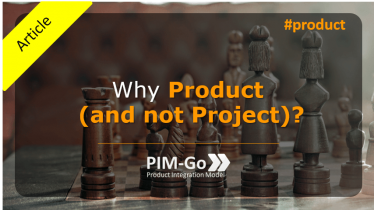Teams from all over the world are undergoing a complete transformation of their way of working. The constant search for agility and results is imperative, especially with the uncertainties of the current world.
However, more than just applying frameworks, it is essential to understand the principles behind each model, what they seek to achieve, their synergies and potential conflicts.
When they converge, the models tend to work in tune. Conversely, we may be diving into a journey of wasting energy, focus, money, and motivation.
So, let’s reflect on the similarities between these two paradigmatic frameworks: OKR and Scrum.
1. Short cycles
OKR works, in general, with quarterly cycles. Scrum with, at the most, 1-month Sprints.
For OKR, this is a huge counterpoint to the traditional strategic annual planning model. Similarly, Scrum breaks with the waterfall concept so prevalent in software development.
Thus, the intention to execute complete, accurate and detailed planning is, in most cases, just not effective. Currently, uncertainty is accepted by stakeholders more naturally. There is a common understanding being built about the importance of moving forward gradually, evaluating the results during the journey and adapting.
Why is this important? Frameworks that work with short cycles allow course correction more quickly. This is called adaptability and is one of the Scrum pillars. As a professional, expect to work with short cycles more often, sometimes with huge shifts in direction. A fundamental professional skill will be resilience, supported by a curious and open mindset.
2. Transparency
OKRs are by nature public, transparent and accessible to everyone. This is one of the factors that allows different collaborators to align themselves with the top-level OKRs or even to compare their OKRs with their peers.
In Scrum, it is similar. Transparency is such an important aspect that it is considered one of its three pillars. Transparency allows inspection, minimizes ambiguities and communication problems. Transparency is present in the Product Goal, Product Backlog, Sprint Backlog, Daily Scrum, and so on…
Why is this important? Organizations that are transparent communicate more clearly, reduce silos and, fundamentally, allow inspection. As a professional, expect transparency to be the rule. For example, e-mails have been increasingly replaced by tools such as MS Teams and Slack, where the rule is communication accessible and available to the whole team.
3. Simplicity
Nothing better than working with something simple, right?
One competitor of OKR is Balanced Score Card (BSC). Nothing against BSC, but it will be quite difficult to implement BSC without an extensive consultancy and/or training process. On the other hand, when dealing with OKR, the processes are simple and scalable, where each cycle evolves compared to the previous one.
And Scrum is no different.
“Scrum is simple”. This is how the Scrum Guide defines itself and demonstrates the importance of simplicity. Therefore, the guide is not detailed, only on the relevant topics. Not by chance, the latest version of the Scrum Guide (2020) reduced its size by about 15%.
Why is this important? Do not expect frameworks to be detailed roadmaps. Teams must have the autonomy to implement their concepts according to the organization needs and constraints, keeping the essential aspects. Frameworks that are not easily understandable drive people away and reduce their effectiveness. The Product Integration Model itself (PIM-Go) is a framework that has Simplicity as one of its values.
4. Outcome-based
This is a name commonly used to designate a management model focused on results, not activities. Does it matter if you completed tasks A, B or C? Isn’t it more important to make sure they actually delivered the expected results?
Both OKR and Scrum are outcome-oriented frameworks.
In OKR “Objectives” is WHAT you want to achieve and “Key Results” is the instrument to MEASURE if that objective is being achieved. See that there are no activities or tasks, what matters is the outcome.
Scrum is similar.
The game is not about completing user stories. But rather, it is all about value delivery. A Scrum Team that delivers 200 stories, but does not deliver value, is not doing a good job.
How do you measure results in Scrum?
In the Sprint Review discussions. Each increment generated by the Scrum Team is placed under the scrutiny of stakeholders and users, where the value generated is evaluated. It created value, excellent! Not this time? Then let’s understand why and adapt.
Why is this important? More and more organizations will engage in outcome-based management and leadership practices. The employee will increasingly have more autonomy to define his activities, work hours, workplace, and so on. But results will be expected. This also implies that centralized micromanagement-focused professionals will not have much space in this foreseen future.
5. Beyond IT
Although these frameworks have started in the context of Information Technology (IT), today both are spread through a variety of industries, in both product development and service provision.
In the latest version of the Scrum Guide, as the authors clarify that they recognize the importance of IT when Scrum was in its early ages, they removed the last technology references to facilitate its use by other industries.
Why is it important? OKR and Scrum are becoming management standards. This means that training and understanding how they work goes beyond a specific industry. More and more “non-IT” professionals with extensive knowledge of these models will be able to excel in innovative processes of modern organizations.
6. Frequent monitoring
OKR is based on cycles, in which check-ins are done regularly (e.g. weekly). This is not a status report, but a conversation about the degree of confidence that the KR will be achieved and how the manager can act to assist in removing impediments. In other words, the objective is not to measure precisely, but to encourage the achievement of goals.
Did you remember a specific Scrum event?
Yes. Although the frequency is different, at Daily Scrum, the goal is very similar. We have a Sprint Goal and the team is committed to get there. At this event, we check progress towards the Goal and adapt, if necessary.
Why is it important? OKR and Scrum act very similarly. Follow-up is the way to keep the conversation and alignment going. Without that, OKR would be a beautiful picture on the wall and Scrum a team that would realize its mistakes only at the end of Sprint. As a professional, expect constant monitoring processes. Not for reporting or mere control purposes, but to allow alignment and adaptation if the initial results do not come true.
7. Lean Thinking
Lean Thinking is the concept implemented at Toyota’s factories in the last century to eliminate waste. This concept was later adapted for startups by Eric Ries in the book Lean Startup, which aimed to eliminate waste by validating hypotheses even before the product was built.
Both OKR and Scrum appreciate that thought. In OKR, this is visible through short cycles, constant alignment, and the possibility of revision if KRs become obsolete.
In Scrum, the Sprint structure, with its constant inspection and adaptation (pillars of Scrum), the timeboxes for each event (e.g. a maximum of 15 minutes on Daily), among others, favor the elimination of waste. In the latest version of the Scrum Guide (2020), Lean Thinking was explicitly included for the first time.
Why is it important? Innovative organizations are increasingly working with the concept of Fail Fast and Learn Fast. That is, even if failure is not desired, it will occur many times. The important thing is to learn from the process, which should happen as soon as possible. This will avoid wasting resources on initiatives that no longer make sense or on technologies that have lagged behind. The manager’s mindset in environments of this type must be open thinking, constant curiosity and focus on validation and learning.
8. Focus, focus and more focus
Speaking of focus, is there any greater harm than pieces of the organization heading in different, sometimes contradictory, directions?
Both OKR and Scrum value focus.
In OKR, focus is exercised through the definition of strategic objectives and key results. Everyone in the organization, from departments to individuals, has the autonomy to define their goals (all or part of them) and their key results. In other words, everyone is moving in the same direction. And once the OKR cycle starts, the teams remain focused on achieving what has been defined.
In Scrum, it is similar. The Product Goal (called the Product Vision in PIM-Go) indicates the long-term product objective. The Sprint Goal is the short-term vision for the current cycle. Once these goals are defined, the team must remain focused on seeking these results. It is not by chance that “focus” is one of the Scrum values as defined in the Scrum Guide.
Why is it important? Focus means keeping the energy and resources directed to achieve the defined goals. As a professional, expect that managers will increasingly play a role in motivating the team and removing impediments that may hinder the achievement of results. Additionally, expect the teams to participate more often in the goal-setting process.
To wrap up…
Imagine that your organization already works with Scrum and is now implementing OKR.
What to expect?
As we have seen, fortunately, it is to be expected that planning carried out using OKR will have a good fit with teams working with Scrum. After all, both frameworks have very similar concepts: transparency, inspection, adaptation, focus on results, simplicity, lean …
Another framework that is closely aligned with Scrum and OKR is PIM-Go. Not only because it applies the same concepts, but particularly due to its logical flow and Canvases which connect these two frameworks.
If you want to know more about OKR, Scrum, Design Thinking, Design Sprint and PIM-Go itself, access the Big Picture of the Agile Model.
Cheers!
Alvaro Junqueira and Igor Lagreca



